Open Journal of Pharmacology and Pharmacotherapeutics
Drug Utilization Study of Drugs of Complementary and Alternative System of Medicine in Patients with Chronic Painful Musculo-Skeletal Conditions
Vikas Dhikav1*, Sonia Mor2, Wasifa Muzaffar2, Nidhi Agarwal2, Sheikh Raisuddin2 and Kuljeet Singh Anand1
2Department of Clinical & Translational Research, Jamia Hamdard University, Hamdard Nagar, New Delhi, 110062, INDIA
Cite this as
Dhikav V, Mor S, Muzaffar W, Agarwal N, Raisuddin S, et al. (2016) Drug Utilization Study of Drugs of Complementary and Alternative System of Medicine in Patients with Chronic Painful Musculo-Skeltal Conditions. Open J Pharmacol Pharmacother 2(1): 001-006. DOI: 10.17352/ojpp.000003Background: Use of drugs of Complementary & Alternative System of Medicine (CAM) is believed to be common. However, data on its prevalence is not known. Similarly, in patients with chronic diseases (e.g. chronic pain), there is no information about its usage. Additionally, it is believed that those who are not being relieved/satisfied with drugs of mainstream medicine usually use drugs of CAM.
Objective: We wanted to know the prevalence and predictors of use of drugs of CAM in patients with chronic painful musculo-skeletal conditions. Also, an attempt was made to know that those with higher pain scores were more likely to use CAM or not.
Methods: Patients coming to Outpatient Department of Pain Clinic were recruited for the present study. A pre-designed proforma was administered to all participants and study objectives were explained. All the patients gave their written and informed consent for enrolment in the study.
Results: A total of 60 patients (M:F=30:30; mean age±SD=48.22±14.33 years) were recruited for the present study. The diagnosis of the patient was as follows (Neuropathy=20, Low back ache=17, cervical spondylitis=6, headache=4, mid back pain=4, osteoarthritis=4, frozen shoulder=3, Rheumatoid arthritis=2). Out of the study sample (n=60), a total of 16 patients used drugs of CAM (26.6%). A total of 9 patients used drugs with main stream medications (56.4%), signifying majority of CAM users used them with mainstream medications. Most common reasons of use of CAM were safety (less common side effects) and perceived benefits. None of the patient informed their physicians about the use of drugs of concomitant CAM usage.
A total of 20 patients had neuropathy (diabetic neuropathy), and the frequency of usage of those with diabetic and non-diabetic neuropathy was same (Chi-Square test of proportion p-value>0.05). Also, those who used CAM and had higher pain scores did not have a significant difference with those who had a relatively lower pain scores (Chi-Square test of proportion p-value>0.05). The same was confirmed using linear regression model (R2=0.03). This implied that those with higher pain scores are as likely to use CAM compared to those with relatively lower pain scores. None of the patient reported any ADR with the use of drugs of CAM in the present study.
Conclusions: Use of drugs of Complementary & alternative system of medicine is very common in patients with chronic painful musculo-skeletal conditions. Also, those with higher pain scores are as likely to use drugs of CAM compared to those with lower scores implying other factors play role in taking up the choice to use CAM.
Introduction
Complementary and alternative medicine (CAM) is the popular term for health and wellness therapies that have typically not been part of conventional Western Medicine. Complementary means treatments that are used along with conventional medicine. Alternative means treatments used in place of conventional medicine [1].
It has been estimated that two-thirds of the world’s population seek health care from sources other than conventional biomedicine. While many of these individuals undoubtedly self-medicate, most of them seek care from practitioners of traditional, indigenous systems of medicine, viz. Ayurveda, Homeopathy, naturopathy, Unani, Siddha etc. CAM is now growing worldwide[2].
As per World Health Organization, the terms “complementary medicine” or “alternative medicine” are used inter-changeably with traditional medicine in some countries3. They refer to a broad set of health care practices that are not part of that country’s own tradition and are not integrated into the dominant health care system.
India is a heterogeneous nation with regard to medical practice where several systems of Medicines are being practiced e.g. herbal, ayurvedic, homeopathy, Siddha, Unani etc [2]. So CAM refers to medical use other than contemporary or conventional medicine, though there is no uniform definition [3,4].
There are various factors that have made CAM popular choice among patients. Started as an off-beat activity related to medicine, this is now coming up as a significant impediment to the conventional drug therapy [5,6]. Drugs of this system may be relatively cheap, widely publicised, coupled with easy availability and over the counter access make them an attractive choice among patients. More so, they are promoted as “safe medications” devoid of side effects compared to mainstream medicines that often have side effects; sometimes of serious nature [7-12].
Chronic painful musculo-skeletal conditions are extremely common category of patients that need long term medical care [13]. These patients often may have a frustrating outcome and are hence predisposed to anger, depression, anxiety and become psychologically vulnerable. Hence they are expected to use “all sorts of available treatment options”. Since there is no cure for several of the common conditions in this category like rheumatoid arthritis, patients may use drugs of CAM along with mainstream medicines. Concomitant usage may lead to potential drug-drug interactions, toxicity or sometimes complete therapeutic failures with concomitant drug use. Long term side effects is other potential outcome [3,14,15].
The current study was hence planned to know the prevalence of CAM usage in patients with chronic painful musculoskeletal conditions, and also to know the factors/predictors associated with their usage.
Material and Methods
This was a questionnaire based cross sectional study conducted at a Tertiary Care Hospital Located in Northern India. Patients coming to Outpatient Department were recruited randomly for the present study. After evaluation by the investigator, patients were given pre-designed Performa (I). Demographic details, Diagnosis, Patients’ history and other details were noted (Case record form-proforma-I). If there was a history of CAM usage; then proforma-II was administered to patients and details of pattern of CAM usage, and satisfaction scores were noted as well.
Study was performed as per the Indian Council of Medical Research (ICMR) guidelines. Study objectives were explained and all the patients gave their written and informed consent (Hindi and English) for enrolment in the study.
Study subjects
Patients coming to a tertiary care institute with a history of chronic pain were recruited in the present study. All of them were given pre-designed proforma and questions were asked of all the subjects. There were a total of 60 subjects (Males: females=30:30) during the study period, and one girl was excluded because she was below 18 years of age.
Patient selection & recruitment
Patient selection was based on Patient history of chronic painful musculoskeletal conditions of various varieties, attending General Out-patient Department, having a history of >6 months were randomly recruited on the basis of below mentioned criteria and were offered questionnaire(Proforma-I and Proforma-II).
Inclusion criteria
1. Men and women with diagnosis of chronic painful musculoskeletal conditions of various varieties.
2. Chronic pain of more than 6 months duration.
3. Patients or their legal caregivers who have given written informed consent.
Exclusion criteria
1. Patients with below 18 years of age.
2. Those who do not agree for giving written consent.
Scales
1. Likert scale (scores between 0-10) was used to evaluate severity of chronic painful musculo-skeletal conditions. Patients were asked to rate the extent of their pain out of a score of 10.
2. Satisfaction visual analogue scale (S-VAS) -Satisfaction scores (Proforma-II) were calculated with CAM usage using the S-VAS. Patients were asked to rate their satisfaction of CAM usage out of a score of 5 (Completely satisfied=1, very satisfied=2, satisfied=3, less satisfied=4, dissatisfied=5).
3. Naranjo Adverse Drug Reaction Probability Scale was used for the assessment of safety and tolerability of drugs of complementary & alternative system of medicine.
Naranjo Adverse Drug Reaction Probability Scale [16] was used for the assessment of safety and tolerability of antipsychotics. An attempt was made to assess the causality using Naranjo Adverse Drug Reaction Probability Scale. The scale consists of 10 questions that are answered either yes, no or don’t know. Different point values range from -1 to +2 (-1, 0, +1,+2). The ADR is divided into definite if the score is 9 or more, probable, if the score is between 5-8, and possible for a score 1-4. Naranjo score is rated 0 for doubtful ADRs. An attempt was made to assess the causality using Naranjo Adverse Drug Reaction Probability Scale.
Pilot study
A total of five patients were randomly selected and were asked to fill the questionnaires, they were able to understand, an attempt was made to know if they understood the questionnaire. After evaluation, all of the following patients understood the Performa and its contents properly. In agreement, was calculated between two raters and Cohen’s kappa was calculated to be 0.8, implying that both the raters were able to administer the questionnaire as directed.
Statistical analysis
Sample size calculation: Considering the population that comes in the outpatient department of Dr. RML Hospital in a given day, and that extrapolated to the study duration (4 weeks; weekly OPDs x 4); at confidence level of 95% with an error of 5% (Alpha level), the putative variable of interest distribution as 50% (0.5 proportion); then requisite sample size was 63. We took a sample of 60 for the present study.
Statistical tools
Statistical analysis: Statistical analysis was done by latest version of Statistical Package for the Social Sciences (SPSS®-SPSS Inc., Chicago, IL). Normality of data was checked by using bar graphs and QQ-plots. Association between the groups was determined by Pearson Correlation Coefficient. Depending upon the type of variables paired t- test and One-Way Analysis of Variances (ANOVA) was used for comparing means of four groups. The minimum level of significance (p<0.05) was used to accept or reject Null hypothesis.
Results
A total of 60 patients (M:F=30:30; mean age±SD=48.22±14.33 years) were recruited for the present study (Table 1). The diagnosis of the patients is given in Figure 1. Out of the study sample (n=60), a total of 16 patients used drugs of CAM (26.6%). A total of 9 patients used drugs with main stream medications (56.4%), signifying majority of CAM users used them with mainstream medications. Most common reasons of use of CAM were less common side effects and perceived benefits. None of the patient informed their physicians about the use of drugs of CAM.
A total of 20 patients had neuropathy (diabetic neuropathy), and the frequency of usage of those with diabetic and non-diabetic neuropathy was same (Chi-Square test of proportion p-value>0.05). ). This implied that patients of diabetic neuropathy too form a homogenous category with regard to CAM usage compared to those with “chronic painful musculo-skeletal conditions” and there was no difference (Figure 2).
There is often a perception among the patients with chronic painful disorders in general and musculo-skeletal disorders in particular that severe or non-remitting pain should prompt them to try drugs of CAM. This hypothesis was tested in the current study using Paired t test comparsions of Likert pain scores to see if the pain scores are a determinant of CAM usage. Results showed means of two groups with or without CAM (4.09±2.61 Vs 5.25±3.15) were different (higher scores in CAM users) but the results were not statistically significant (p>0.05). The results showed that pain scores are not a determinant and other factors play a role in patients’ choices in resorting to CAM usage (Figure 3).
Also, those who used CAM and had higher pain scores did not have a significant difference with those who had a relatively lower pain scores (Chi-Square test of proportion p-value>0.05).
The same was confirmed using linear regression model (R2=0.03). The patients who were CAM users were assigned the score of 1 and those who did not use were given a score of 0. Linear regression showed regression coefficient (R2) as 0.03 showing a neglisible value of variance is being explained by presence of CAM usage due to pain scores. This reinforces the hypothesis that pain per se is not the factor that promotes patients to use CAM. There are other factors behind e.g. cultural beliefs etc. This implied that those with higher pain scores are as likely to use CAM compared to those with relatively lower pain scores (Figure 4).
Pain and Satisfaction Scores with drugs of complementary and alternative system of medicine are graphically displayed (Figure 5). Using a transformed data, the correlation between these two was studied and it was found there was a weak correlation between two (Pearson’s correlation coefficient (r)=0.20; p>0.05).
None of the patient reported any ADR with the use of drugs of CAM in the present study.
Discussion
Chronic painful musculoskeletal conditions are very common and the use of drugs of Complementary & Alternative System of Medicine (CAM) is believed to be common [4]. However, data on its prevalence is not known. Similarly, in patients with chronic diseases (e.g. chronic pain), there is no information about its usage. Additionally, it is believed that those who are not being relieved/ satisfied with drugs of mainstream medicine usually use drugs of CAM5; especially in chronic conditions. Self-medication in developing nations is common too [6].
In the current cross sectional, exploratory study; we wanted to know the prevalence of use of drugs of CAM in patients with chronic painful musculo-skeletal conditions. Also, an attempt was made to know that those with higher pain scores were more likely to use CAM or not. A total of 60 patients with chronic painful musculo-skeletal conditions were recruited for the present study.
The current study found that the use of drugs of Complementary & alternative system of medicine is very common in patients with chronic painful musculo-skeletal conditions. Also, those with higher pain scores are as likely to use drugs of CAM compared to those with lower scores implying other factors play role in taking up the choice to use CAM.
A recent study from India (n=38) [3], investigated CAM usage in chronic neurological disease. In this study, patients were asked to specify who suggested that they use CAM and whether they noticed any improvement following CAM use. Patients were randomly selected from a neurology outpatient department of a tertiary care hospital. All had mild to moderate AD. Eleven patients out of 38 studied (29%, M:F, 10:1) confirmed that they had used CAM over the last six months.
Their pattern of CAM use was as follows: Ayurvedic = 8 (21%); Homeopathy = 2 (5.3%); Accupuncture = 1 (2.6%). Eight out of 11 admitted using CAM because they perceived that “desi davai” (Hindi equivalent of indigenous drugs/alternative medicines) were good for the brain and free from side effects.
In this study, nine out of 11 were using CAM along with conventional medicines for AD, e.g. cholinesterase inhibitors and N-methyl D-aspartate (NMDA) modulators (rivastigmine, donepezil, memantine, etc.). None of the 11 patients studied reported any clinical improvement with CAM and none informed their treating physicians of CAM use.
The frequency of usage of CAM was 26.6% in the current study and was not different from the earlier reported study [3]. A large study of patients with cancers from northern India (n=1117) showed that the most common CAM therapy7 in use was found to be Ayurveda treatment reported by 187 (16.7%) patients. Overall CAM use was found to be 38.7%. Sixty percent of patients who were aware of CAM were not using CAM, only 40% aware were using CAM. Low socioeconomic status contributed maximum to proportions of CAM use; wherein out of all users, 175 (40.5%) patients were using CAM. In the present study, majority of the patients (n=55) belong to good socioeconomic status.
Maximum degree of relief was found due to homeopathic treatment (78.4%) in this study; whole no relief was noted in one of the earlier study3 and the current study. Reasons of using CAM therapies reported by the users were mainly on the advice of family members or friends (23.1%).
A similar study from south India (n=200 patients), 52 (26%) patients were identified to be using CAM therapy. The most commonly used CAM modality by these patients was Ayurveda both alone (30.4%) and in combination with other CAM modalities (23.2%), followed by acupuncture in 17.3% patients. CAM usage was high in the age range of 50-64 years (67%). Of the CAM users, 21% of patients were from a rural area; 16.5% of patients were from upper middle class, and 24% were on dialysis for 1-4 years. There was a statistically significant association between CAM usage and age, gender, place of living, socioeconomic status, and duration of dialysis (P < 0.01). In our study, we did not find a significant association.
A study from the developing nations9 (n= 4799) showed the prevalence of consulting TCAM providers was 26.0 %; 27.0 % in Cambodia, 26.3 % in Thailand, 23.9 % in Vietnam. The most commonly consulted TCAM providers were the herbalist (17.3 %), massage therapist (6.0 %), and acupuncturist (5.5 %). For all different types of TCAM providers more than 80 % of participants perceived the consultation as very or somewhat helpful. The own use of herbal medicine was 41.0 %, own use of vitamins 26.5 % and the own use of other supplements 9.7 % in the past 12 months. The most common self-help practices in the past 12 months included praying for your own health (30.1 %), meditation (13.9 %) and relaxation techniques (9.9 %).
One recent large study [10], from central Indian Adults attending the outpatient clinics for epilepsy, Human Immune Deficiency virus infection, rheumatoid arthritis and diabetes mellitus who took CAM were recruited over a period of 16 weeks. Of the 4664 patients screened, 1619 (34.7%) were using CAM and 650 (40%) of them consented to participate. The extent of use of CAM was 63% in patients with DM, 42.7% in RA, 26.2% in HIV and 7.7% in epilepsy. Ayurveda 57.1% (95% CI 53.27–60.89) was the most frequently used CAM. Satisfaction in terms of effectiveness and global satisfaction was highest among patients with HIV (69.4% and 69.2%, respectively) and least among those who had RA (56.6% and 54.1%, respectively).
High scores were reported to ‘no side-effect’ domain in all the four diseases which is in agreement with our study. Large proportion of patients with four chronic diseases reporting to a hospital of allopathic medicine in India were also using CAM and were satisfied with its use which was also seen in our study. The study concluded that given the potential interaction of CAM with allopathic medicines, a history of use of CAM should be elicited in clinical practice. This is because; patients do not reveal this to their treating physicians.
The safe and appropriate use of CAM is also a source of concern, especially when used concomitantly with other medicines. Treating physicians are often unaware of the use of CAM by their patients. It has been estimated that two-thirds of the world’s population seeks healthcare from sources other than those providing treatment with the allopathic system of medicine. While some patients self-medicate, most seek care from learned practitioners of traditional, indigenous systems of medicine, viz. Ayurveda, which is a popular traditional system of healthcare in India [11].
CAM has now undergone a revival in the West [12-14]. According to a recent study, >40% of American households tried it during the recent years. A similar trend exists worldwide. Recognition of the rising use of alternative medicine and other non-traditional remedies led to the establishment of the Office of Alternative Medicine, a unit of National Institutes of Health in 1992, which alone supports over 50 investigations into the usefulness of various alternative therapies.
A study in arthritis found forty three percent (46/114) had used CAM drugs [15] and 50% of them had used more than two modalities. Ayurveda followed by homeopathy were the two common CAM utilized by the patients. Majority believed conventional medicine has no cure for RA and adverse reactions were rare in CAM. These factors predominantly influenced their decision to use CAM. Family income, urban and rural living did not influence usage of CAM. The use of CAM increased as the duration of disease increased.
In arthritis of rheumatoid type and that of the osteoarthritis [17], pain was one of the major factor behind the use. In one such study [18], of rheumatoid arthritis, out of 102 patients with RA included in the study, 39% reported current CAM use, a prevalence not very different from our own. Ayurveda was the commonest (28% courses) followed by homoeopathy (20%), yoga asana (17%) and pranayama (12%). Pain control was the primary reason for using CAM (69% of users), which was not the case in our study.
Most CAM therapies (78%) were started on the advice of friends and relatives. Discontinuation of CAM was attributed to lack of clinical benefit (78%) and adverse effects (10%). Of the patients using CAM, 87% did not reveal its use to their physicians, primarily because the physician did not enquire about it.
Patients with RA frequently use CAM for pain control. These practices are often not revealed to the treating physician. Knowledge of the concurrent use of CAM may serve to alert the physician about potential side-effects or drug interactions.
To the best of our knowledge, this is the first combined study on chronic painful musculoskeletal conditions where prevalence and its predictors have been studied. The hypothesis was that pain itself may be the reason of using CAM in these patients; however, the study results do not support it. Hence, there is need for physicians to be aware of concomitant CAM usage, and understand the other factors e.g. socio-cultural so that patients can be counselled about safe and effective usage of conventional medications. Also, their optimal usage can be ensured. This is because concomitant CAM usage puts patients at risk of drug interactions, increased risk of toxicity, and adverse drug events apart from increase in drug cost and interference with monitoring of therapeutic response. Also, partial or complete failure of medications can also occur.
Patient and healthcare worker education is needed. In a study of Nurses, a positive attitude towards CAM was noted [19]. A majority of the participants (89.3 percent) felt that Ayurveda is highly/moderately effective. A majority of participants agreed with most items, indicating positive attitudes toward CAM therapies. Lack of evidence, lack of staff training, unavailability of credentialed providers, and lack of appropriate equipment were seen as the main barriers to practicing CAM therapies. In a comparative study of nursing and medical students, nurses had relatively positive attitude but both student groups have limited knowledge of complementary and alternative medicine modalities [20]. Information on this topic is increasingly needed as there is a call to integrate the CAM with mainstream medicine [21-24]. The training in CAM had a positive impact on the knowledge, attitude and practice of medical students [25].
Conclusions
Use of drugs of Complementary & alternative system of medicine is very common in patients with chronic painful musculo-skeletal conditions. Also, those with higher pain scores are as likely to use drugs of CAM compared to those with lower scores implying other factors play role in taking up the choice to use CAM.
- (2016) General Guidelines for Methodologies on Research and Evaluation of Traditional Medicine. (Accessed online on May 9th 2016).
- Singh S (2003) Health of indigenous people: local practices and practitioners can become part of comprehensive programme. BMJ 327: 988.
- Dhikav V, Anand KS (2012) Complementary and alternative medicine usage among Alzheimer's disease patients. Int Psychogeriatr 24: 1361-1362.
- Munshi A, Hsueh L and Tiwana M (2008) Complementary and Alternative Medicine in Present Day Oncology Care: Promises and Pitfalls. Jpn J Clin Oncol 38: 512-520.
- Movahedi H (2015) Knowledge, attitudes, and practice behaviors of Norwegian pharmacy workers toward the use of herbal products and dietary supplements by dementia patients. Master thesis in Pharmacy.
- Shankar PR, Partha P, Shenoy N (2016) Self-medication and non-doctor prescription practices in Pokhara valley, Western Nepal: a questionnaire-based study.
- Kumar D, Goel NK, Pandey AK, Sarpal SS (2016) Complementary and alternative medicine use among the cancer patients in Northern India. South Asian J Cancer 5: 8-11.
- Arjuna Rao AS, Phaneendra D, Pavani ChD, Soundararajan P, Rani NV, et al. (2016) Usage of complementary and alternative medicine among patients with chronic kidney disease on maintenance hemodialysis. J Pharm Bioallied Sci 8: 52-57.
- Peltzer K, Pengpid S, Puckpinyo A, Yi S, Vu Anh L (2016) The utilization of traditional, complementary and alternative medicine for non-communicable diseases and mental disorders in health care patients in Cambodia, Thailand and Vietnam. BMC Complement Altern Med 16: 92.
- Bhalerao MS, Bolshete PM, Swar BD, Bangera TA, Kolhe VR, et al. (2013) Use of and satisfaction with complementary and alternative medicine in four chronic diseases: a cross-sectional study from India. Natl Med J India 26: 75-78.
- Zollman C, Vickers A (1999) What is complementary medicine? BMJ 319: 693-696.
- Jonas WB (1998) Alternative medicine--learning from the past, examining the present, advancing to the future. JAMA 280: 1616-1618.
- Vaidya AD, Vaidya RA, Nagral SI (2001) Ayurveda and a different kind of evidence: from Lord Macaulay to Lord Walton (1835 to 2001 AD). J Assoc Physicians India 49: 534-537.
- Fisher P, Ward A (1994) Complementary medicine in Europe. BMJ 309: 107-111.
- Chandrashekara S, Anilkumar T, Jamuna S (2002) Complementary and alternative drug therapy in arthritis. J Assoc Physicians India 50: 225-257.
- Naranjo CA, Busto U, Sellers EM, Sandor P, Ruiz I, et al. (1981) A method for estimating the probability of adverse drug reactions.Clin Pharmacol Ther 30: 239-245.
- Khan MU, Jamshed SQ, Ahmad A, Bin Ahmad Bidin MA, Siddiqui MJ, et al. (2016) Use of Complementary and Alternative Medicine among Osteoarthritic Patients: A Review. J Clin Diagn Res 10: JE01-6.
- Zaman T, Agarwal S, Handa R (2007) Complementary and alternative medicine use in rheumatoid arthritis: an audit of patients visiting a tertiary care centre. Natl Med J India 20: 236-239.
- Poreddi V, Thiyagarajan S, Swamy P, Gandhi S, Thimmaiah R, et al. (2016) Nursing Students Attitudes and Understanding of Complementary and Alternative Therapies: An Indian Perspective. Nurs Educ Perspect 37: 32-37.
- Yildirim Y, Parlar S, Eyigor S, Sertoz OO, Eyigor C, et al. (2010) An analysis of nursing and medical students' attitudes towards and knowledge of complementary and alternative medicine (CAM). J Clin Nurs 19: 1157-1166.
- Chitindingu E, George G, Gow J (2014) A review of the integration of traditional, complementary and alternative medicine into the curriculum of South African medical schools. BMC Med Educ 14: 40.
- Brinkhaus B, Joos S, Lindner M, Kohnen R, Witt C, et al. (2005) Integration of complementary and alternative medicine into German medical school curricula -- contradictions between the opinions of decision makers and the status quo. Forsch Komplementarmed Klass Naturheilkd 12: 139-143.
- Chitindingu E, George G, Gow J (2014) A review of the integration of traditional, complementary and alternative medicine into the curriculum of South African medical schools. BMC Med Educ 14: 40.
- Frenkel M, Ben Arye E (2001) The growing need to teach about complementary and alternative medicine: questions and challenges. Acad Med 76: 251-254.
- Al Mansour MA, Al-Bedah AM, AlRukban MO, Elsubai IS, Mohamed EY, et al. (2015) Medical students' knowledge, attitude, and practice of complementary and alternative medicine: a pre-and post-exposure survey in Majmaah University, Saudi Arabia. Adv Med Educ Pract 6: 407-420.
Article Alerts
Subscribe to our articles alerts and stay tuned.
 This work is licensed under a Creative Commons Attribution 4.0 International License.
This work is licensed under a Creative Commons Attribution 4.0 International License.
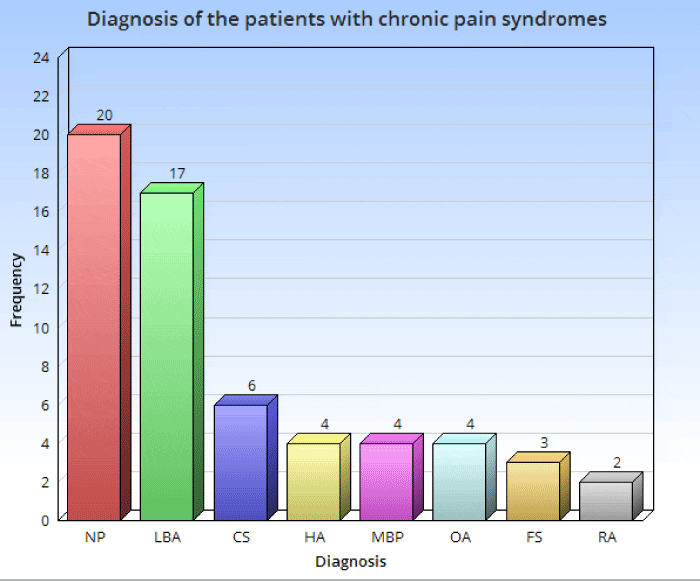
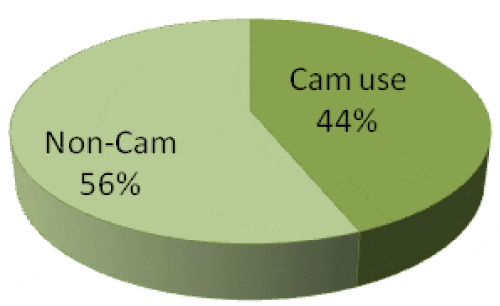
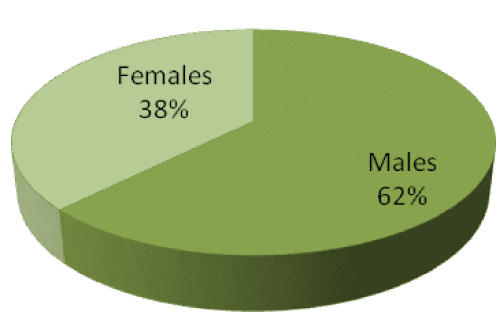
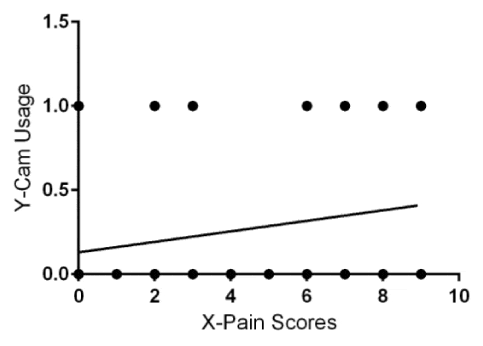
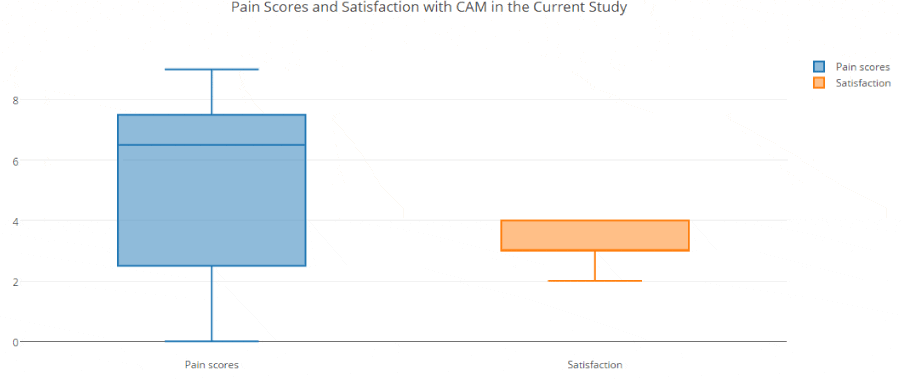
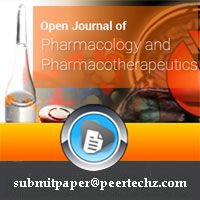
 Save to Mendeley
Save to Mendeley
